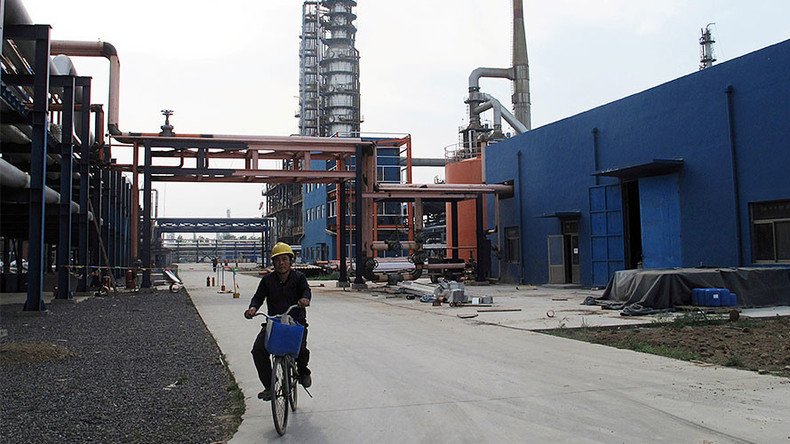OPEC struggling to hold on to Asian market share

Two years ago, OPEC took steps to increase its market share. It continued with this same policy for two years by pumping oil in an oversupplied market. The result: oil prices tanked and OPEC increased their market share by a small margin.
Today, low oil prices are crippling the finances of OPEC members, forcing them to agree to cut production to support oil prices.
But just over a month of production cuts and data shows that OPEC has lost around 5 percent market share in Asia since October.
The US, Brazil, Britain and Libya have increased their supply to Asia from 10.4 million barrels in October 2016 to over 35 million barrels in February of this year. This is bad news for OPEC, and may be a major hurdle in extending the production cuts beyond the stipulated six-month period.
"Under current oil market conditions, OPEC risks losing market share with further production cuts," said Carole Nakhle, director of advisory firm Crystol Energy in London, reports Reuters.
OPEC, however, is trying to retain its major customers such as China and India through a sustained supply of oil. Data shows that while China’s imports increased 27.5 percent year-on-year in January, Saudi Arabia’s supply to the Asian powerhouse rose by 18.9 percent.
Read more on Oilprice.com: Cooking The Books? Saudi Aramco Could Be Overvalued By 500%
Between December 2016 and January of this year, Saudi Arabia’s exports to China increased a whopping 40 percent. Though it is likely that the increased supplies would have come from floating storage, it shows that the oil rich kingdom is making all-out efforts to keep the customers well supplied.
The Saudi Arabian King Salman bin Abdul-Aziz al-Saud’s ongoing official visits to the major importing nations of China and Japan - among others - can be seen as an attempt to keep its major customers placated.
Nevertheless, in an oversupplied market, the customers are likely to try other suppliers on for size, especially when the landing price of oil is not very high. The suppliers, on the other hand, are widening their customer base, taking advantage of OPEC’s production cuts, low freight charges, and arbitrage opportunities to reach out to new markets.
"The OPEC cuts have ... led to an open arb for long-haul cargoes, leading to a rise in long-haul crude imports (which) make up for the decline in OPEC (supplies)," said Tushar Bansal, director of Ivy Global Energy, a Singapore-based consultancy, reports Reuters.
Read more on Oilprice.com: Is Mexico’s Oil Boom Under Threat?
Due to new competitors, Saudi Arabia has not been able to raise the official selling price of its Saudi light crude oil to Asia. The current Saudi light crude OSP to Asia is at a 15-cent-per barrel premium to Dubai crude, which shows that the oil-rich kingdom hasn’t regained its pricing power.
"The OSP to Asia in the 2010-2014 time period averaged $1.65 over Dubai. In the time since the world price collapse back in mid-2014, that OSP has averaged a discount of 34 cents to Dubai," said RBC strategist Michael Tran in a note.
"Right now, we're slightly north of flat. I would think that while there's no magic number...I would look at more of a trend. If you see several months where you see a material uptick, that would suggest that the market is certainly tightening. If we saw a 30 cent hike two or three months in a row, I think that would be quite significant," Tran added, reports The Street.
This article was originally published on Oilprice.com














